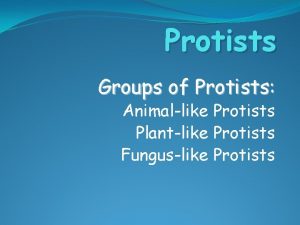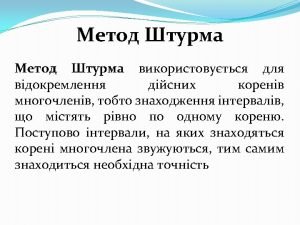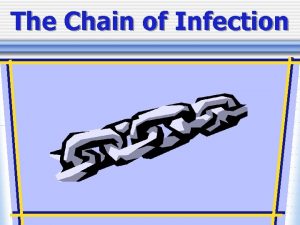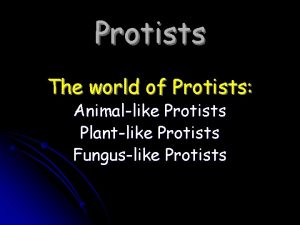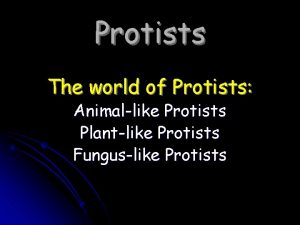IV Plantlike protists Multicellular Algae Multicellular algae include






- Slides: 6

IV. Plant-like protists : Multicellular Algae *Multicellular algae include : 1. Red Algae 2. Brown Algae 3. Green Algae -Multicellular algae are classified by color (photosynthetic pigments).

Red Algae 1. Red algae (Rhodophyta) - type of algae that is red in color (contain chlorophyll a & reddish accessory pigments) & can be found in deep, warm waters. -The name Rhodophyta means “red plants”. -The accessory pigments of red algae are called Phycobilins – pigments that are good at absorbing blue light from the light spectrum. Is what allows them to live deeper in the ocean than other algae. -Help in the formation of coral reefs. -Make up most of our common seaweed, Ex : Agar (Petri dishes) & Carrageenan – used to prevent separation of food mixtures (chocolate & milk, ice cream).

Brown Algae 2. Brown Algae (Phaeophyta) - type of algae that gets its color from brown pigments (chlorophylls a & c & fucoxanthin), Ex : Seaweed/Kelp. -Phaeophyta means “dusky plants”. -Most are marine & found in cool, shallow, coastal areas. Is the largest, most complex group of algae.

Green Algae 3. Green Algae (Chlorophyta) - type of algae that is green in color (chlorophyll a & b) & has a cell wall made of cellulose, ex : Chlamydomonas – 2 flagella & pyrenoid, Volvox, & Ulva. -Name means “green plants”. -Share many of the characteristics of land plants, ex : have cellulose in cell walls & store food as starch. -Most live in fresh water (or land), some found in ocean. -Form colonies – groups of similar cells that are joined together but show few specialized structures. -Share symbiotic relationships with other organisms, ex : Fungi.

Alternation of Generations -Most algae have a life cycle known as the alternation of generations. Alternation of generations – process in which many algae switch back & forth between haploid (n) & diploid (2 n) stages of their life cycles.

Human Uses for Algae : Human uses for algae include : Sushi, ice cream, salad dressing, pudding, candy (vitamin C), to treat stomach ulcers, high blood pressure, arthritis, & make plastics, waxes, lubricants, etc.
